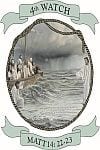Podcast: Download (7.0MB)
Subscribe: RSS
 While there are interesting evidences for a “tight control” over the Book of Mormon translation, there are also evidences and logical reasons to assume a “loose control.” In this article, Michael Ash provides several examples illustrating this method from Elder John A. Widtsoe and Orson Pratt.
While there are interesting evidences for a “tight control” over the Book of Mormon translation, there are also evidences and logical reasons to assume a “loose control.” In this article, Michael Ash provides several examples illustrating this method from Elder John A. Widtsoe and Orson Pratt.
The full text of this article can be found at Deseret News online.
Brother Ash is author of the book Shaken Faith Syndrome: Strengthening One’s Testimony in the Face of Criticism and Doubt, as well as the book, of Faith and Reason: 80 Evidences Supporting the Prophet Joseph Smith. Both books are available for purchase online through the FairMormon Bookstore.
Tell your friends about the Mormon Fair-Cast. Share a link on your Facebook page and help increase the popularity of the Mormon Fair-Cast by subscribing to this podcast in iTunes, and by rating it and writing a review.





